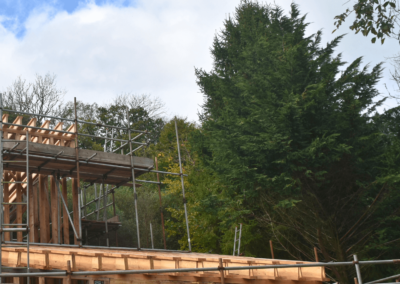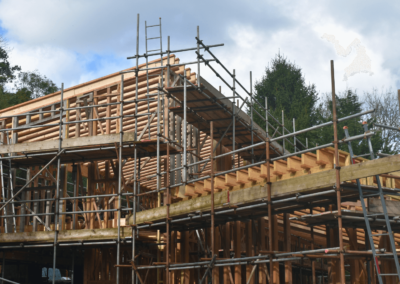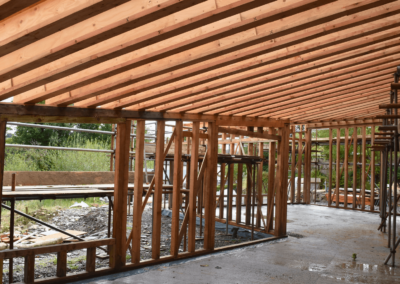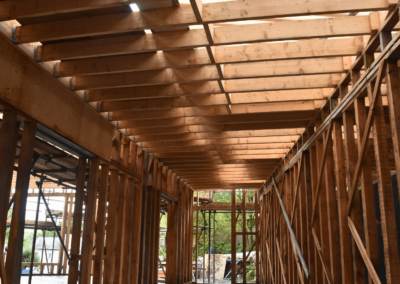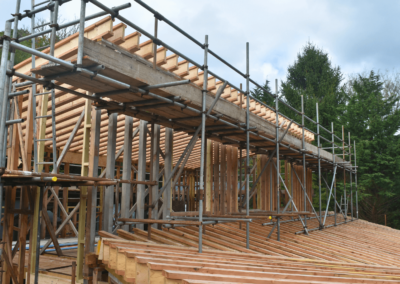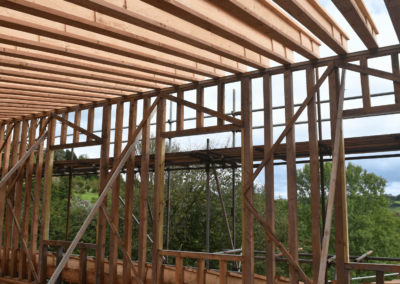Carreg Las
A carbon-neutral hempcrete home, designed for minimal environmental impact, combining concealed structural studwork and timber I beams.
The Brief
Carreg Las is a carbon-neutral family home thoughtfully situated within the picturesque landscape of Glandwr, Pembrokeshire. Designed to balance aesthetic appeal with sustainable living, the home showcases a unique architectural form that maximises both solar gain and environmental sensitivity. At its core, Carreg Las features a concealed timber studwork frame infilled with Hempcrete, offering exceptional thermal insulation and a breathable, healthy indoor environment. This eco-friendly design reduces the building’s carbon footprint while blending seamlessly into its natural surroundings.


The Story Behind the Design
Carreg Las embodies the future of sustainable construction, focusing on low-impact materials and techniques. Makers Mark Joinery collaborated closely with Mundo Architecture to bring this vision to life. The structural framework, while concealed, plays a pivotal role in supporting the Hempcrete infill, creating a strong, energy-efficient envelope for the home. The decision to hide the timber elements allowed for a sleek, modern exterior finish, aligning with the clients’ desire for a contemporary look.
Key to the design are the Timber I Beams, which provide robust support while allowing for longer spans and an open, flexible interior space. This modern approach to framing ensures durability and strength while also contributing to the home’s overall energy efficiency.
How It Was Made
The construction of Carreg Las focused on precision and sustainability. The concealed structural studwork, fabricated from locally sourced Larch, supports the Hempcrete infill that offers both insulation and moisture control, enhancing the building’s overall performance. Timber I Beams, spanning over 7 metres, were strategically employed to maximise interior space without the need for additional supports, facilitating a spacious and open-plan design. These beams not only offer superior load-bearing capacity but also improve the structure’s energy efficiency by minimising thermal bridging.
The modular building systems used in the project enabled quick assembly and reduced material waste, staying true to the project’s low-carbon ethos. The clever design allowed the frame assembly to be completed in just 5 weeks by a small crew, achieving structural integrity and precision without the need for cranes or heavy machinery, in line with the access limitations of the site.

Our Newsletter

